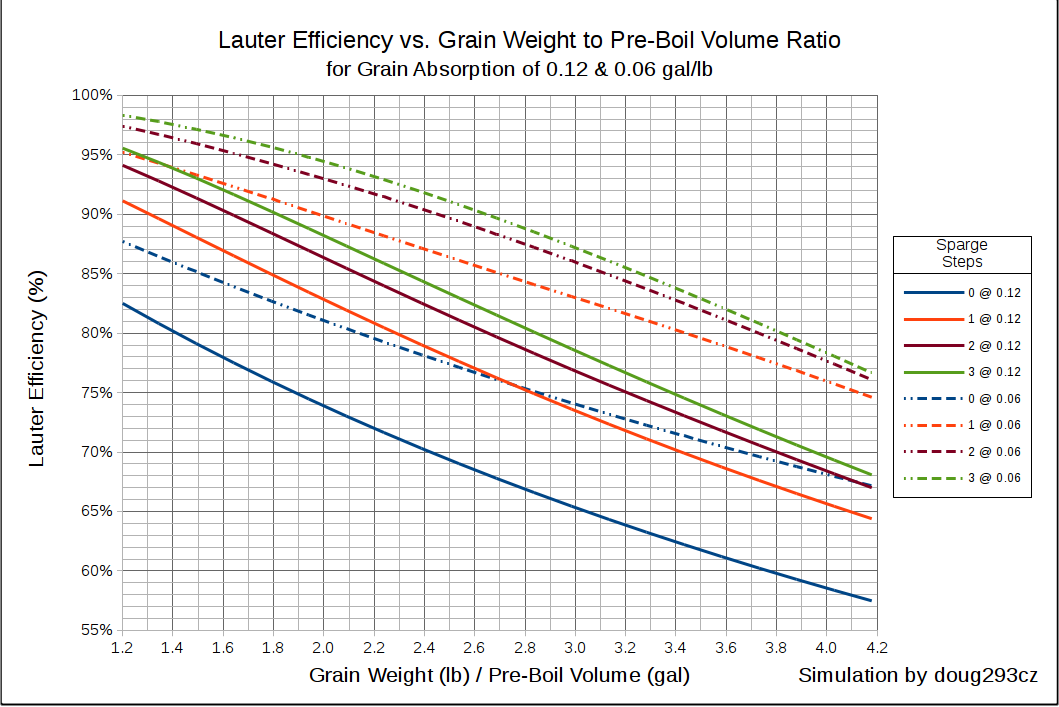*** pseudo-science warning ***
So I see lot of posts about low efficiency and talk about testing for complete conversion, but that seems a bit odd to me. Chalk it up to too much thinking and not enough brewing.
Per Palmer's chart of enzyme activity temps and text thereabouts, the starches are soluble at 95 degrees reaching 90% solubility at 130. I imagine that if we were to mash at that temperature for a short time (or otherwise horribly miss our target temps in a normal mash), we'd have a wort full of starch, but I expect the gravity would be roughly the same as a good mash - it's a measure of solids disolved in the H2O, right? Starches are particles too! I could be totally off here though - please tell me if you know better.
Other reading indicates raising to mash out temps should free up a small % more starch.
So my question to those with more experience: Do you consider conversion and efficiency as two separate topics, or are they close enough to the same thing to lump together?
I also wonder what effect finings can have on final gravity - especially in a beer with starch haze, for example. Could use of finings be masking unfermentables (causing them to drop out thereby reducing the final gravity)?
I'd be intersted in gravity readings taken during the mash process - every 15 minutes or so. My expectation is that the readings would quickly reach a steady-state. I may have to test that next time around (although it would add a good bit of work).
So I see lot of posts about low efficiency and talk about testing for complete conversion, but that seems a bit odd to me. Chalk it up to too much thinking and not enough brewing.
Per Palmer's chart of enzyme activity temps and text thereabouts, the starches are soluble at 95 degrees reaching 90% solubility at 130. I imagine that if we were to mash at that temperature for a short time (or otherwise horribly miss our target temps in a normal mash), we'd have a wort full of starch, but I expect the gravity would be roughly the same as a good mash - it's a measure of solids disolved in the H2O, right? Starches are particles too! I could be totally off here though - please tell me if you know better.
Other reading indicates raising to mash out temps should free up a small % more starch.
So my question to those with more experience: Do you consider conversion and efficiency as two separate topics, or are they close enough to the same thing to lump together?
I also wonder what effect finings can have on final gravity - especially in a beer with starch haze, for example. Could use of finings be masking unfermentables (causing them to drop out thereby reducing the final gravity)?
I'd be intersted in gravity readings taken during the mash process - every 15 minutes or so. My expectation is that the readings would quickly reach a steady-state. I may have to test that next time around (although it would add a good bit of work).






























![Craft A Brew - Safale BE-256 Yeast - Fermentis - Belgian Ale Dry Yeast - For Belgian & Strong Ales - Ingredients for Home Brewing - Beer Making Supplies - [3 Pack]](https://m.media-amazon.com/images/I/51bcKEwQmWL._SL500_.jpg)






























